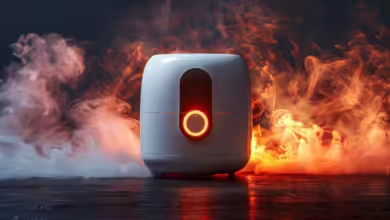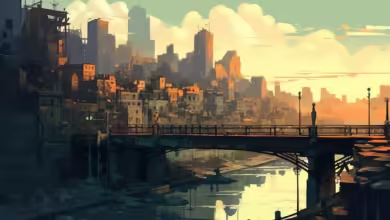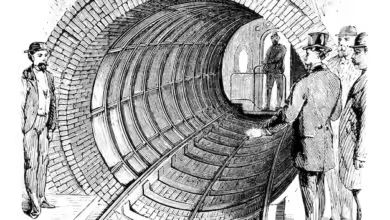Ai art horror iv needles

Artificial Intelligence (AI) has found its way into almost every corner of our lives. From optimizing mundane tasks to creating breathtaking art, AI’s capabilities continue to expand. However, one particular trend in AI-generated art has captivated and terrified audiences: AI art that blends medical themes with horror, specifically focusing on IV needles. This spine-chilling intersection of medical imagery and dark fantasy provokes fear, discomfort, and fascination in equal measure.
In this article, we dive into why AI art involving IV needles evokes such strong emotions, how it blurs the line between fear and beauty, and what this says about our complex relationship with both technology and the human body.
What is AI Art?
AI art refers to artwork created by algorithms or machine learning models trained on vast datasets of images, often manipulated to create unique and abstract compositions. While AI art spans multiple genres—landscapes, portraits, and surreal imagery—its applications in horror have particularly stood out.
AI can analyze patterns, forms, and aesthetics to generate creative visuals. But what happens when it taps into the horrifying aspects of human experience? One such terrifying theme is the medical realm, particularly the depiction of invasive medical tools like IV needles, which can trigger intense fear in many people.
The Psychological Fear of Needles
Needle phobia, or trypanophobia, is a real and common fear that affects many people worldwide. The sight of needles, especially those used for IVs, evokes a visceral reaction—whether due to the fear of pain, blood, or losing control over one’s body. This inherent dread forms the perfect foundation for AI-generated horror art.
While medical treatments involving IVs are essential and routine, there’s something unsettling about these instruments of healing being distorted into symbols of terror. AI art accentuates this fear by amplifying the sharp, sterile, and invasive aspects of needles, making them appear menacing.
How AI Captures the Horror of IV Needles
1. Distorted Reality
AI often takes images and warps them in ways that aren’t confined by the limitations of human imagination. When it comes to IV needles, AI art can present them in exaggerated or unnatural forms—needles that appear oversized, twisted, or even sentient. These manipulations transform an ordinary medical tool into something from a nightmare.
2. Body Horror
A popular subgenre in horror is body horror, which focuses on grotesque alterations to the human body. In AI art, the blend of IV needles with body horror often results in images where needles are shown piercing the skin, intertwining with veins, or growing from within the body. This kind of imagery taps into deep-rooted fears about our physical vulnerability.
3. The Cold, Clinical Aesthetic
Medical environments are often depicted as cold, sterile, and devoid of warmth. AI art heightens this atmosphere by using bleak color palettes, such as muted grays and whites, punctuated by the harsh, metallic gleam of needles. This contrast between sterile environments and the terror they can evoke is a recurring theme in AI horror art.
4. Uncanny Valley
AI art sometimes walks a fine line between the recognizable and the unfamiliar. With IV needles, AI can create visuals that feel disturbingly real, yet slightly off—like a needle that’s too long, or an IV bag that seems to pulsate with life. These subtle distortions exploit the uncanny valley, where things appear almost human but are just alien enough to induce discomfort.
Why AI Art Involving IV Needles is So Effective
1. A Universal Fear
Fear of medical procedures, particularly those involving needles, is nearly universal. Almost everyone has had an experience involving an IV, and many people associate it with pain or vulnerability. This familiarity allows AI art featuring IV needles to resonate deeply with viewers on a psychological level.
2. Loss of Control
The very idea of being hooked up to an IV involves surrendering control over your body to medical professionals. AI-generated art can intensify this fear by presenting needles as invasive, uncontrollable objects, often depicted in swarms or growing uncontrollably. It’s a fear of losing agency, a fear of being overtaken by something you can’t control.
3. Technological Alienation
AI itself can feel alien to many people—an unfeeling, machine-driven process that lacks empathy or understanding. This coldness mirrors the way many feel about the medical field. By combining AI’s detached creation methods with the sterile, invasive imagery of IV needles, the resulting artwork can make the viewer feel distanced from both technology and their own humanity.
The Impact of AI-Generated Horror Art on Society
1. A New Form of Digital Expression
AI-generated art has provided artists with new ways to explore fear and the darker sides of human nature. Horror art that uses medical imagery, like IV needles, challenges our perceptions and invites us to confront our deepest anxieties. It also pushes the boundaries of what we define as art—whether created by human hands or through algorithms.
2. The Ethical Dilemma
As AI-generated horror art grows in popularity, it raises ethical questions. Should AI be used to create content that can intentionally trigger or distress viewers? Is there a line between artistic expression and exploitation of fears? The combination of AI and horror has sparked debates about the role of technology in shaping our emotional experiences.
3. Therapeutic Potential
Surprisingly, confronting fears through horror art can have a cathartic or therapeutic effect. Some individuals may find solace in viewing AI art that reflects their phobias, allowing them to process their fears in a controlled setting. AI’s ability to blend abstract and realistic elements can create visuals that feel both terrifying and distant, potentially helping people face what frightens them.
Conclusion
AI art and horror have come together in fascinating and terrifying ways, particularly when focusing on medical themes like IV needles. By distorting reality, manipulating body horror, and tapping into universal fears, AI art evokes strong emotional responses. As we continue to explore the intersection of technology, fear, and art, the impact of these AI-generated creations will undoubtedly continue to challenge and captivate audiences.
So, the next time you see an image of a twisted IV needle in an AI-generated artwork, take a moment to appreciate the complex web of emotions it stirs. The fusion of technology and horror may just offer us new ways to understand our own vulnerabilities.




